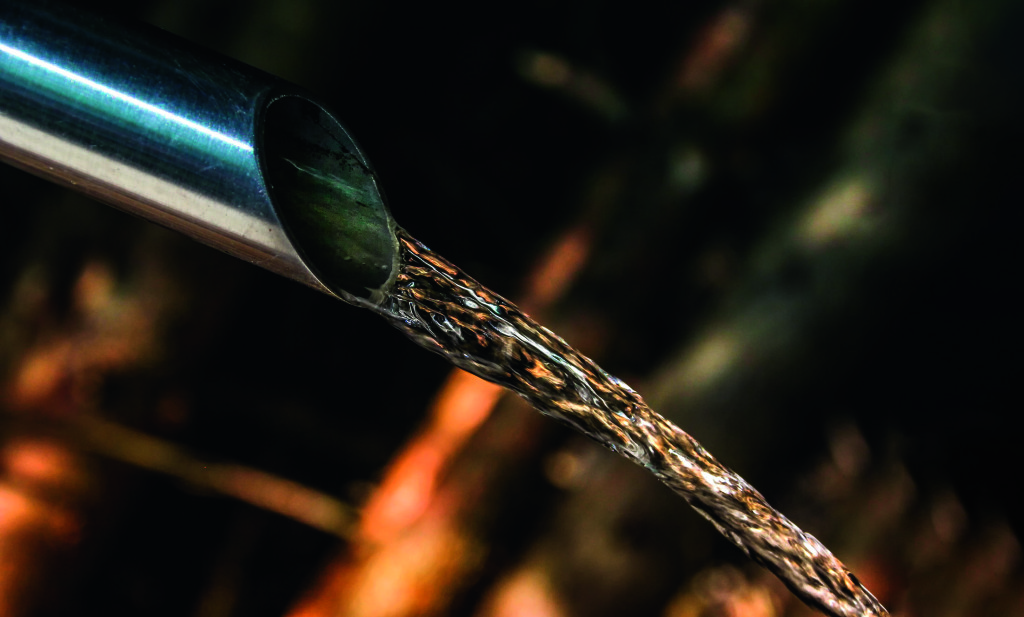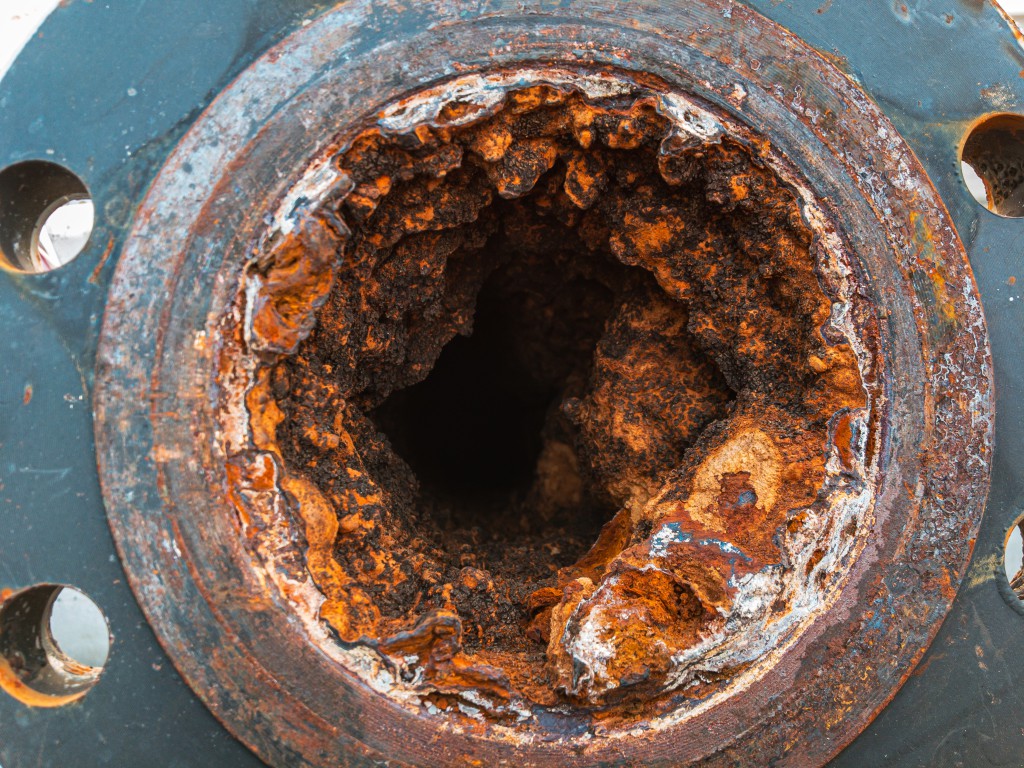Going behind the scenes of pipework corrosion

Steve Munn, Managing Director at Hevasure, explores some of the common problems picked up by real-time monitoring technology and explains why early detection of problems and timely intervention can save huge amounts of money and hassle.
Real-time monitoring of closed water systems leads to savings at every stage of a system’s life; from reducing the need for chemicals, sampling and consultants, to preventing the disruption and cost associated with catastrophic failures.
The phrase 'prevention is better than cure' is often attributed to Dutch philosopher, Desiderius Erasmus, around the turn of the 16th Century a concept that remains to this day a pillar of modern healthcare. By identifying the precursors to ill health, early interventions can be made that delay the onset of severe conditions or even prevent them from occurring.
The same concept can be applied to commercial building management. Think of HVAC systems and pipework as the heart and veins of a building and if they get clogged up or fail due to lack of monitoring or mismanagement, it can affect the efficiency and operation of the entire building.
The ‘health’ of our buildings is under threat
Data from Hevasure’s real-time HVAC monitoring systems show that more than 50% of commercial buildings are under threat from pipework corrosion. The data was collected from more than 85 commercial buildings nationwide over an eight-year period, including some of London’s most iconic commercial spaces, such as the Leadenhall Building and Scalpel. Other installations include hospitals, data centres and residential blocks connected to district heating schemes.
Systems at risk of corrosion are more likely to breakdown, which could end up costing into the millions, depending on the level of damage and the knock-on effect it has on reliant plant and building operations – failed cooling for a data centre with consequential outage, for example, could run into even higher figures.
The majority of alarms triggered on our monitoring systems relate to high levels of dissolved oxygen – something that is not detected by sampling and corrosion coupons, and prior to the invention of real-time corrosion monitoring technology, went largely unchecked.
Why is oxygen such a problem?
Water-based HVAC systems are key to the operation and efficiency of commercial buildings, transferring heat energy around a building by pumping water through pipework and valves to a range of heat emitters or from chillers. Systems are either open to the air, cooling towers for example, or closed; sealed pressurised systems including low-temperature hot water (LTHW) heating systems, chilled water (CHW) systems and heat pumps.
Closed systems must remain sealed and pressurised environments. Any oxygen ingress can quickly lead to pipework corrosion, wreaking havoc on overall building performance and increasing the risk of breakdown and expensive repairs.
Oxygen ingress is common in closed systems; it can be caused by the entry of fresh aerated water due to leaks or routine maintenance activities such as flushing, or, as our data shows, sudden loss of pressure. What is key is that dissolved oxygen in the system is identified immediately, allowing building maintenance engineers and FMs to make targeted interventions, therefore, preventing any further problems.
Following updates in 2021, dissolved oxygen (DO) is now identified as the main cause of closed system corrosion in BSRIA guides BG50/2021. Water Treatment for Closed Heating & Cooling Systems and BG29/2021 for Precommission Cleaning of Pipework. Real-time monitoring technology is recommended as ‘best practice’ for mitigating against the effects of DO.
What are the key indicators of corrosion?
The introduction of real-time monitoring technology for closed circuit systems has really changed the game in terms of corrosion control. Previous to this, sampling and corrosion coupons were the only monitoring options; and while both still play a role in HVAC management, we now have the technology to pick up the early warning signs and intervene at a much earlier stage before corrosion has occurred.
Corrosion monitoring systems detect a wide range of parameters in real-time, with live readings taken every 15 minutes and sent direct to responsible parties. In our study, over 1,800 alarms were triggered over an 8-year period, detecting a range of problems that would largely have remained invisible under the old system, including:
High dissolved oxygen – 25% of alarms
Closed heating / chilled water systems need to be air-tight to prevent the ingress of dissolved oxygen. For a typical closed system, dissolved oxygen levels should be around 0.1 to 0.2 mg/L. Oxygen is the precursor of most types of corrosion.
Pressure – 22% of alarms
Positive (but not excessive) pressures must be maintained to prevent air being drawn-in.
Conductivity/dosing – 22% of alarms

For systems dosed with chemicals, conductivity is directly related to concentration. Measuring this parameter is essential to ensure that minimum thresholds are maintained, otherwise inhibitors are ineffective, and glycols offer insufficient freeze protection. Conversely, over-dosing is an environmentally unacceptable and an expensive waste.
Temperature – 15% of alarms
This is a key parameter of any HVAC system and needs to be constantly checked to ensure it is operating at the intended level.
pH – 7% of alarms
Must be maintained within the limits set by the chemical supplier in order to ensure metals are immune from corrosion or adequately passivated.
Crevice corrosion – 7% of alarms
Crevice corrosion can occur even if general corrosion rates are low. It occurs in localised regions, such as weld seams, crimpled joints or under debris, due to differential aeration effects and is a frequent cause of pitting attack and pin-holing.
Galvanic currents – 2% of alarms
The galvanic current is the current that flows between different metals within a system, for example, steel and copper. Maintaining low galvanic currents is indicative of low oxygen levels and/or good inhibition of metallic surfaces.
Make the connection
By monitoring all these parameters together in real-time, responsible parties are able to identify the root cause of a problem, enabling early intervention and preventing costly downtime and repairs. For instance, oxygen ingress can be caused by pressurisation issues or the demand for fresh make-up water as a result of a leak or planned drain-down. The latter would also explain why conductivity (related to dosing level) was decreasing, indicating a need for remediation and chemical top-up.
How much does prevention save?
As buildings become smarter and more connected, the stakes become much higher and the manual monitoring approach is simply no longer fit for purpose. With real-time monitoring systems installed, either built-in from the start or used for short or long-term maintenance outcomes, savings can be made across the board.
If a water system fails, costs will not only be incurred through replacement and refit, but management and consultancy, and any legal bills. For a large system there are some examples where these costs have exceeded £10m (replacement and legal fees). Even the cost of remediation (investigation, replacement of parts and recommissioning/water treatment) will exceed £100k in most circumstances.
A closed water system that doesn’t break down, doesn’t suffer from corrosion, and runs at peak efficiency, is saving huge amounts of money long-term and it is only through 24/7 real-time monitoring that this operational certainty can be achieved.
Behind the scenes and hidden from view, corrosion is a huge problem for some of the UK’s most critical infrastructure. With effective real-time monitoring technology in place, it is possible for responsible parties and facilities managers to identify the precursors of corrosion and make early interventions to prolong the life of valuable HVAC assets – potentially savings millions of pounds in the process.
We have published a white paper, ‘Behind the scenes of closed-system HVAC’1 which examines its findings over the past eight years and introduces the new range of corrosion monitoring technology.
Source
- www.hevasure.com/news-insight/closed-loop-hvac-systems-explained-faqs
Steve Munn, Managing Director at Hevasure,








